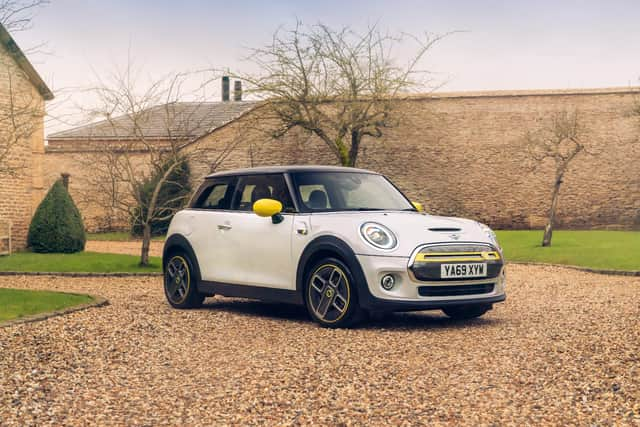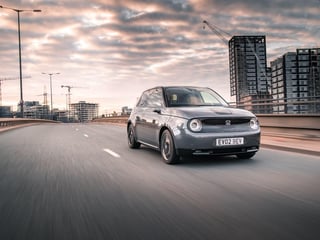The real-world range of electric cars revealed: the best and worst performing EVs


Following the announcement of the planned 2030 ban on all new petrol and diesel cars all eyes are on the growing electric car market.
2020 has seen a host of new EVs launched - from the £25,000 MG5 to the £140,000 Porsche Taycan Turbo S - and 2021 will bring another slew of models. In November EV sales were up 122 per cent and they accounted for 9.1 per cent of the market - three times what they did last year.
Advertisement
Hide AdAdvertisement
Hide AdThere are lots of issues to think about when considering an EV. Some are obvious like size and price, others like charging speeds are less obvious. One key factor which comes up for virtually every buyer is range - how far will an EV go on one charge.
Various factors have an impact on this, including battery size, driving conditions and even the weather, but as with fuel economy for petrol cars, manufacturers must provide an official WLTP range for every model.


Like the economy figures for combustion-engined cars, the range figures for EVs are obtained under strict testing protocols but aren’t necessarily reflected in real-world conditions.
So to see how the biggest EVs on the UK market perform in real life car buying platform Carwow tested the range of 13 models. As with any testing, individual drivers might see different results but the Carwow test found large differences, with some models achieving more than their stated range and others falling up to 26 per cent short.
Advertisement
Hide AdAdvertisement
Hide AdBest performing in the test was the Mini Electric. The small hatchback’s WLTP range is a relatively short 145 miles but under testing it returned 154 miles - 106 per cent of the official figure. The Volkswagen e-Up also outperformed the official data, achieving 162 miles - 101.8 per cent of its stated 159-mile range.
Top performer among the 200-miles-plus club was the Renault Zoe, which managed 96 per cent of its WLTP range - 229 miles instead of 238. The Zoe was third overall, ahead of the Honda e, and Kia e-Niro, both of which managed 90 per cent of their respective 125- and 282-mile ranges.
At the bottom of the table, the Peugeot e-208 managed 162 miles - 74 per cent of its claimed 217-mile range - which the Mercedes EQC and Jaguar I-Pace also fell substantially short. The Mercedes’ 194 miles was 75 per cent of its official range, while the Jaguar managed a one per cent improvement, covering 223 miles against a WLTP range of 292 miles.
EV real-world ranges
| Model | WLTP Range | Actual Range | % achieved |
| Mini Electric | 145 | 154 | 106% |
| VW e-UP | 159 | 162 | 101.8% |
| Renault Zoe | 238 | 229 | 96% |
| Honda e | 125 | 113 | 90% |
| Kia e-Niro | 282 | 255 | 90% |
| Nissan Leaf | 239 | 208 | 87% |
| VW ID3 | 263 | 224 | 85% |
| Vauxhall Corsa-e | 209 | 174 | 83% |
| Audi e-tron | 255 | 206 | 81% |
| Tesla Model 3 | 348 | 270 | 78% |
| Jaguar I-Pace | 292 | 223 | 76% |
| Mercedes EQC | 259 | 194 | 75% |
| Peugeot e-208 | 217 | 162 | 74% |
The test, which involved a mixture of urban and motorway driving, revealed that on average the 13 cars achieved 85.9 per cent of their WLTP range before their batteries completely died and they could go no further.
Advertisement
Hide AdAdvertisement
Hide AdCommenting on the findings carwow’s chief content officer, Mat Watson, said: “All car buyers have one eye on 2030 and the ban on the sale of new diesel and petrol cars, so interest in electric cars is at an all-time high. According to our research, the secret to buying a cost-efficient electric car right now is to aim for a car that can manage more than 200 miles in the real world that comes with a healthy discount – and not just the Government electric car grant.
“But whichever electric car you’re interested in, don’t be surprised that its real-world range won’t match its advertised figure – traditional petrol and diesel cars rarely match their advertised fuel economy figures either. And we wouldn't advise running your EV until it completely runs out of power, like we did on our tests. But take reassurance that your car will give you plenty of warning before it runs out of charge, and most cars managed a few miles even after showing zero per cent left in the batteries.”
